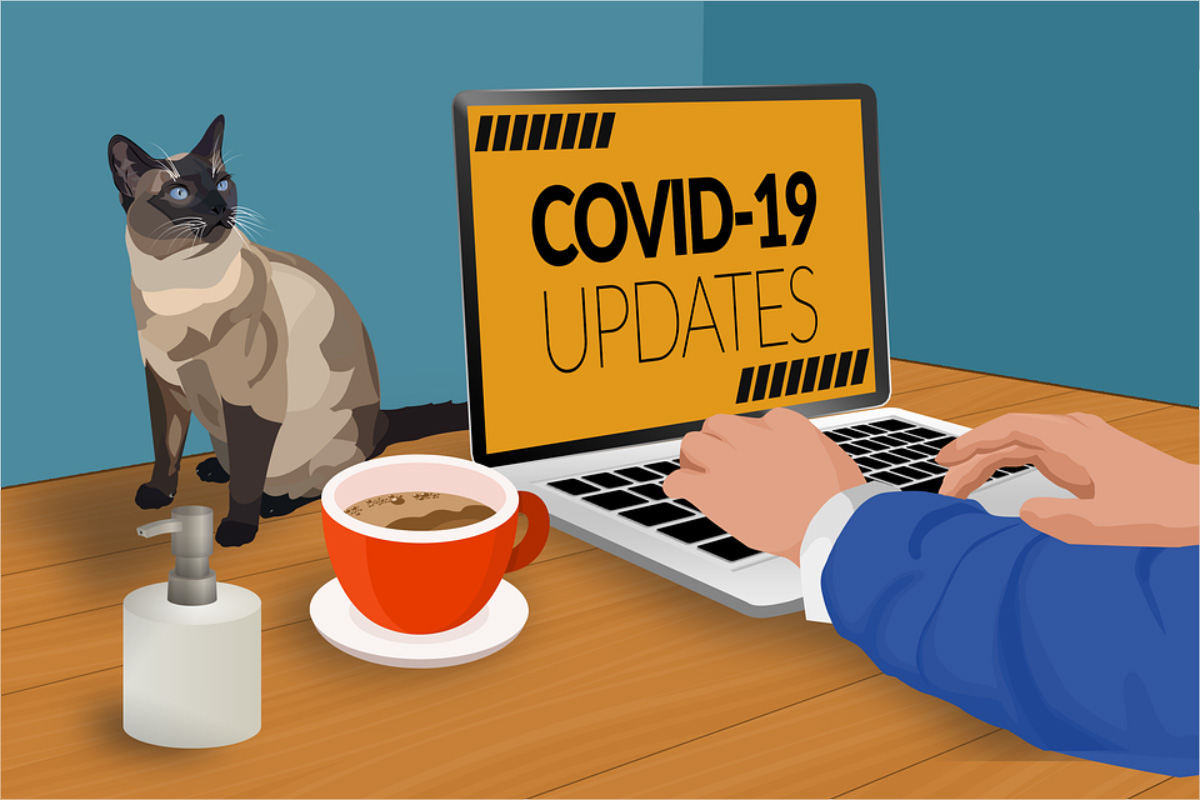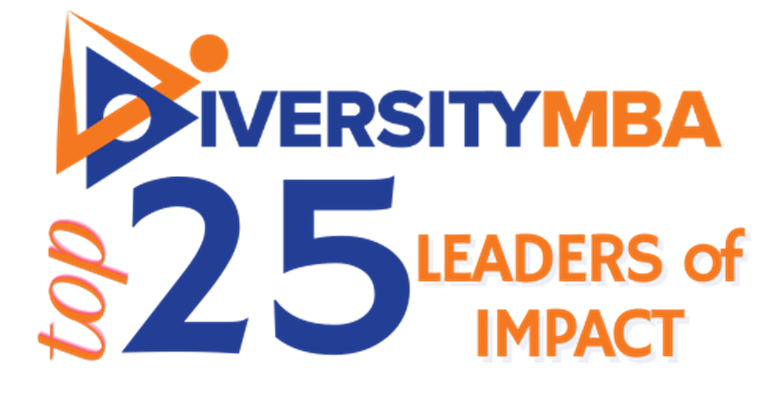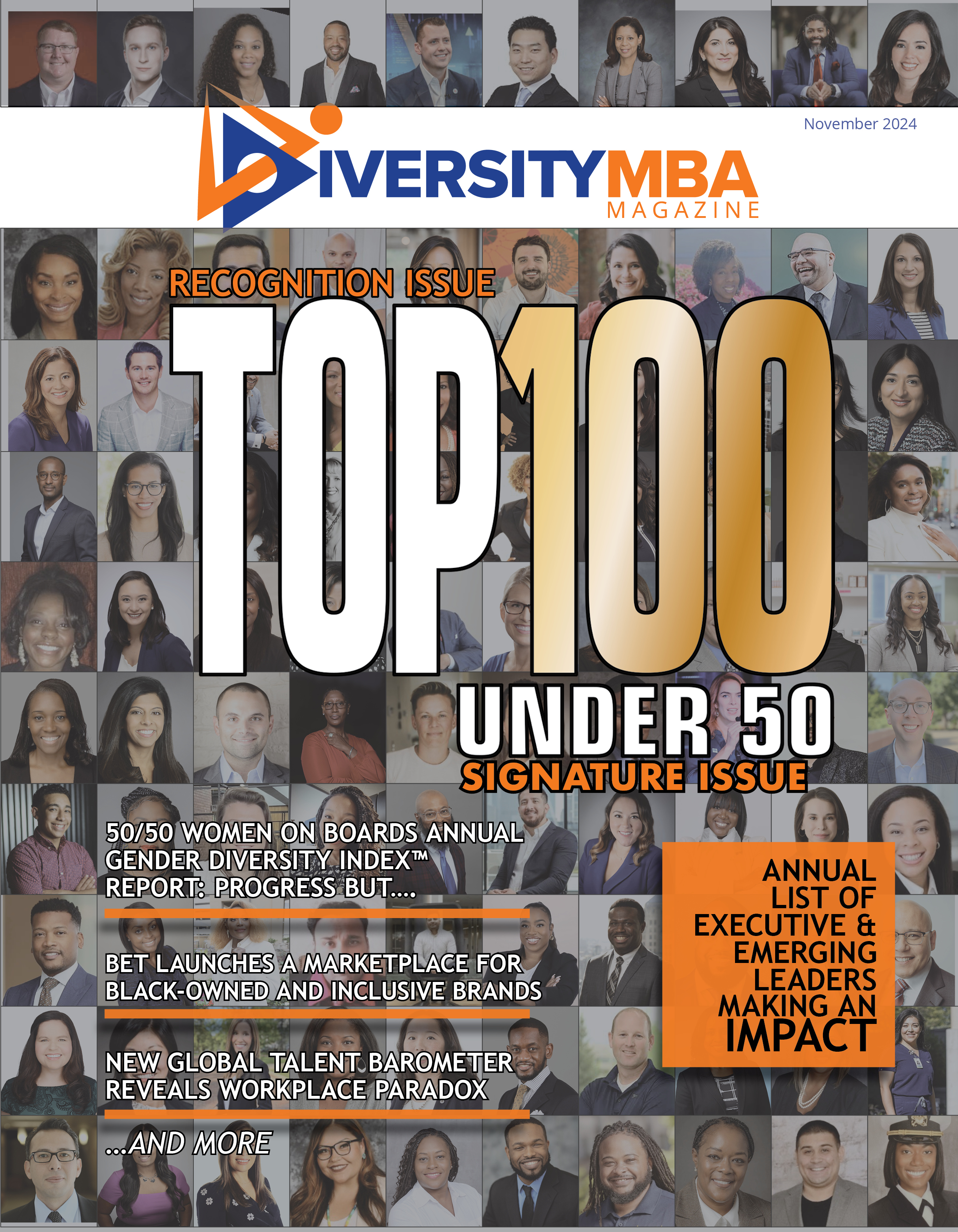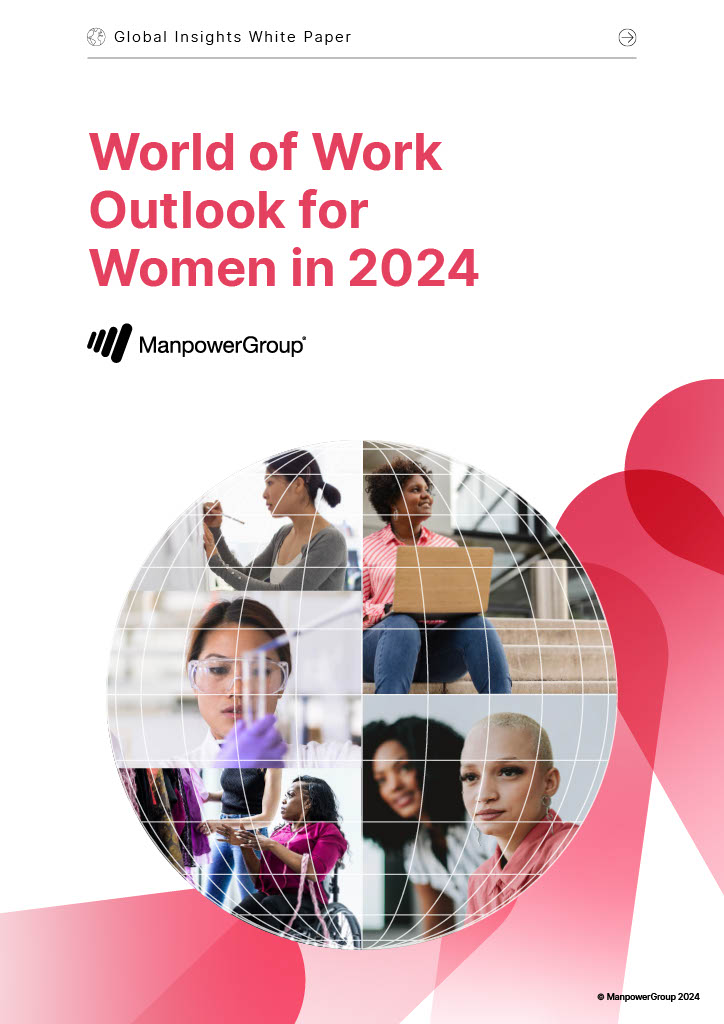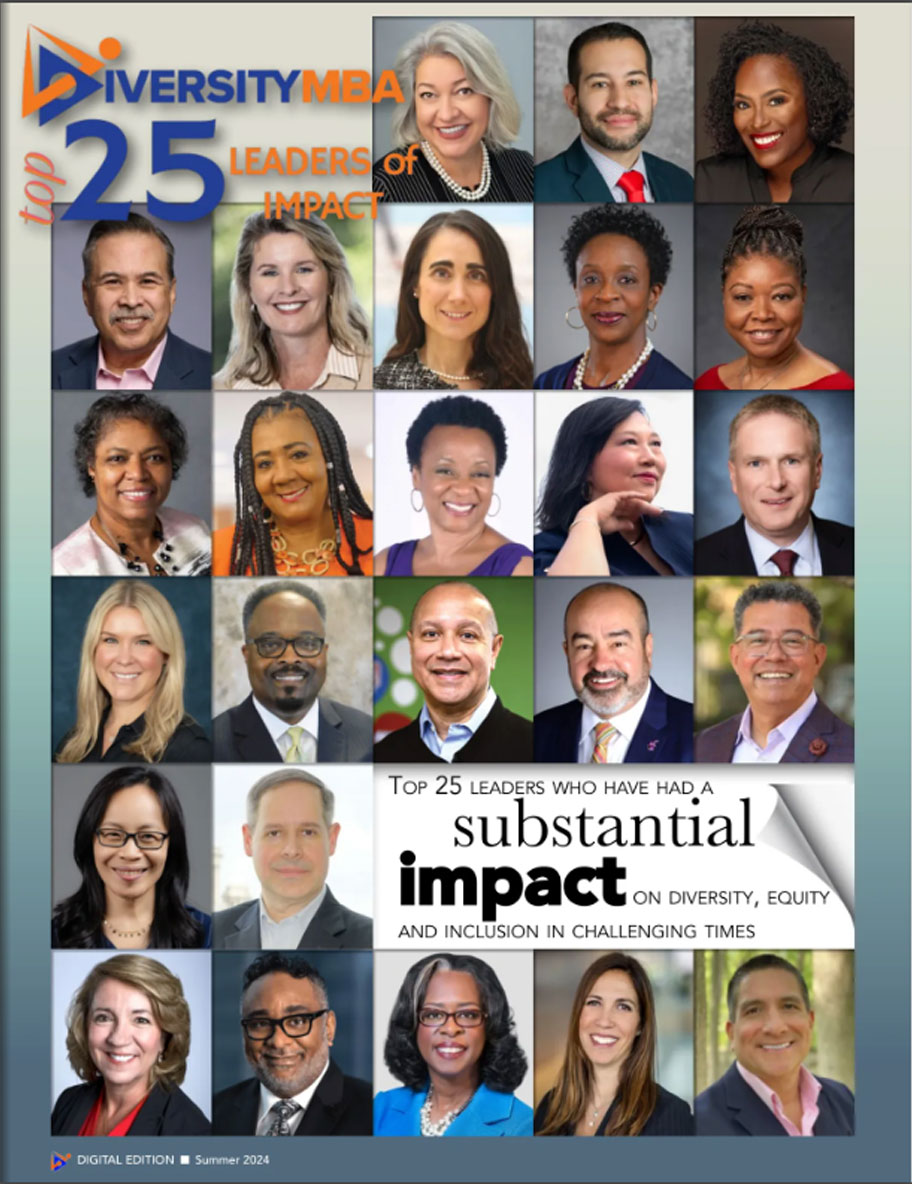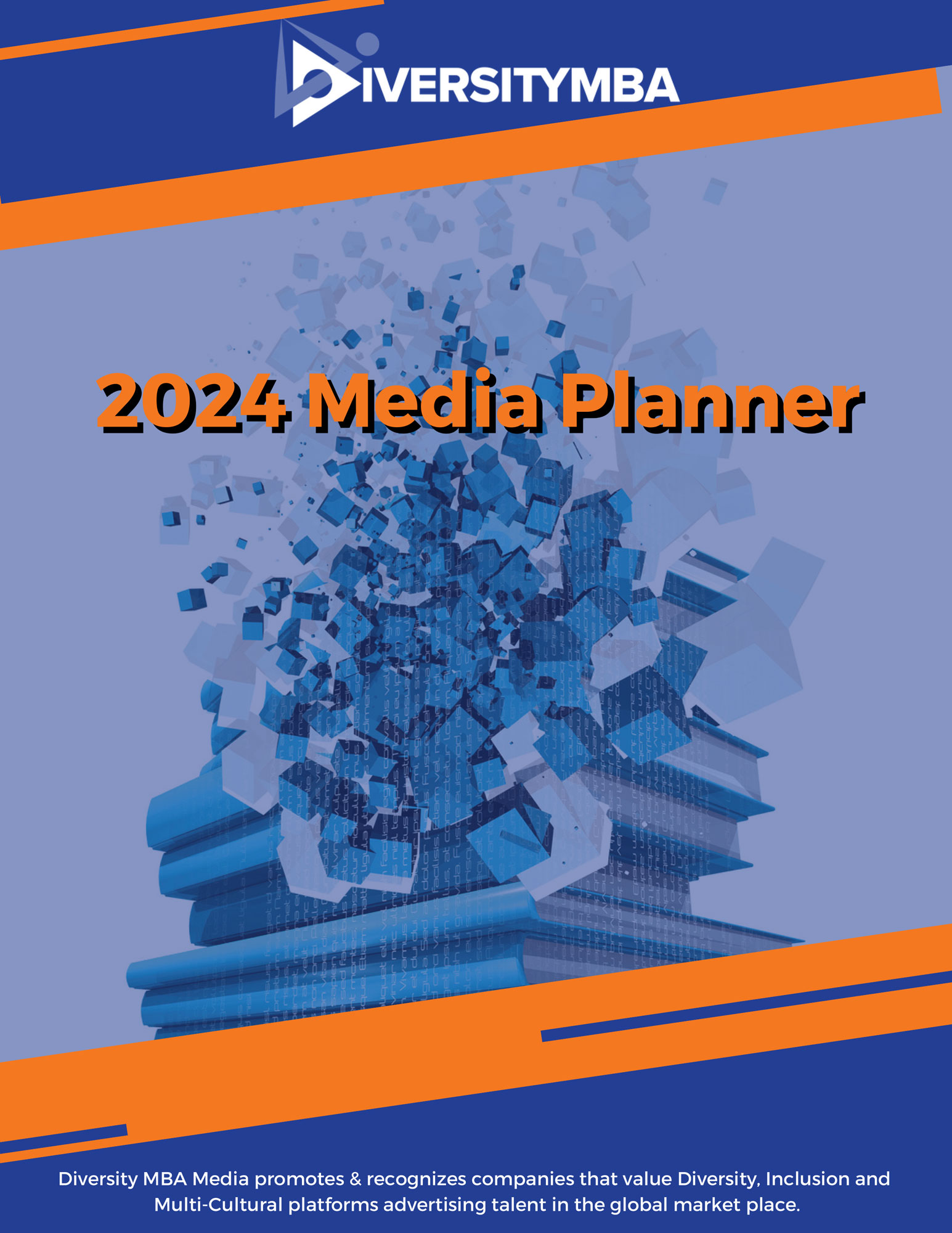Diversity MBA hosts weekly COV19 insights call for diversity leaders to have a place to come and share what they are dealing with, how they feel, and what is working. We have had more than 50 companies participate; all are welcome. Our intent is to provide insights of the sharing and invite all DEI leaders that would like to join. This document is only a tool. You may add more based on your experience; send comments to pam@diversitymbamagazine.com. We distribute at the end of each we bimonthly if different insights are shared. Thank you to all the leaders that have participated and shared.
Pam McElvane, CEO & Publisher, Diversity MBA Media.
WORK RE-ENTRY PLAN
What are some of things you are thinking about and planning for re-entry to work?
- Primary Objective is to ensure people are feeling protected and safe.
- Companies are all looking at a Phased Approach as early as June 1.
- Companies are managing up to 4 phases of employee re-entry.
- Example: Phase 1 – 500 employees out of 7,000 employees. This first phase includes
employees who struggle working from home. - 1st wave – 10% of workforce on June 1 for another company.
- Concerned about how social distancing will impact engagement and feelings of
disconnection. - Within phrase 1 companies are reconfiguring the office space. Not sure how open spaces will look.
- Securing input and feedback from local infectious disease experts; as well as having them monitor our plan from safety perspective – gyms, café, elevators.
- Phrase 2 reopening will include monitoring every 4-6 weeks if for additional cases occur before increasing workforce re-entry to 10-20%. Must monitor all aspects of persons health for return.
- Multi-nationals also are phasing in on global scale and looking at every region
differently.
- Multi-nationals also are phasing in on global scale and looking at every region
- Mental Health resources are being expanded and enhanced. For example: anxiety and fear in hospitals are high so having a phycologist stand by with
- EAP services are extended for anxiety management
- Companies recognize some employees will be conflicted on the return to work, so they want to address all issues as soon as appropriate.
- Ensure alignment with state requirements. example: temperature checks for employees and vendors will occur every day.
- Potential conflicts for stay at home between states, county, cities (especially big cities), suburbs must be considered.
As for facilities, cafeteria will be closed, and food delivery will be accepted for lunch. Masks will be required when employees are not in their cubicles or offices. Healthcare facilities are already open 24/7 and will continue to do so.
From a business perspective: companies with brick and mortar are examining testing on multiple levels: for example: retail stores / distributions centers / supply chain et.al. While stores are currently closed distribution channels are still open and must remain viable.
PLANNING FOR RETURN TO WORK-THE FUTURE THINKING
We must return to work at some point; what are companies doing to prepare, and what are they thinking about?
- Workforce locations will be different in how seating is arranged with spacing; everyone will have to wear a mask; and some employees cannot return to work until tested. What will lunch options look like because we cannot congregate in one room.
- Starting re-entry thinking now to address our own mental health and well- being thinking about having daily sessions all day for employees to re-engage.
- To Watch: what happens in healthcare holistically; perhaps one of the silver linings here that it is available for everyone.
- Is how we work remotely better? What should we do to ensure we keep this level of engagement with remote employees when we return to the physical offices?
- Employees working from home is extended until mid-July; discussing reentry to take place in phases and considering some employees working from home indefinitely.
- Must have a stronger public healthcare system that is better prepared. Companies/organizations need to re-evaluate their influence for change.
- Lots of organizational change; great position to be in right now; trying to put together strategies and an independent team for go forward thinking.
- Healthcare industry workforce has not stopped working, so their concern is the mental health of returning to work and implications of their experience.
- Expectation is that the impact of COV19 will continue through 2021 and everyone will be wearing a mask the entire day, and at all large gatherings.
- Employees come back to office in stages; every office building and stations will be sanitized.
- Communicating and partnering with team members and community members. Preparing for the surge. Planning to provide grants to community safety net organizations. $100k for under-resourced and communities of color with technologies. Partnering with faithbased orgs to help garner and share resources. Feeding employees daily by shift and getting food for them to take home.
- Some companies still do not know yet, but it is on their mind, however, they are making decisions consistent with all levels of government. Some companies don’t plan to be first to return but will be a “fast follow.”
- Vaccine prior to return to office: if no vaccine is available, for some companies it is not a consideration; considering the underlying health issues of employees
MANAGING THE CURRENT SOCIAL JUSTICE ENVIRONMENT
The reality is we live in a society that issues of Just and Injustices affect the lives of our employees every day. How companies support and integrate these emotions into the inclusive conversations sets the tone for the culture; that is the question?
- Employee Resource Groups are significant in leading the dialogue on current social justice activities. Planning activities that encourage allies to step up and act. For example, white men have connected with DEI leaders for guidance on how to be a part of the solution.
- Must maintain balance between, mental health and personal care while in a pandemic and now social justice activity.
- One executive shared: D, I and E work is still needed; there is still work to be done; saddened, disheartened; emails from white colleagues asking for conversations; planning a system wide (60k employees) men’s Courageous Conversation and letting men lead while women support them.
- Must think more creatively about what to do. For example, connecting ERGs because they somewhat work in silos; Hispanic, Black and Asian ERGs working closer, but need to align even more.
- Changes in safety policies: companies are reevaluating current safety polices and protocols. Committees have been established for the long term because not sure what the long term implications will be due to COV19.
How do you think DEI will restructure/change based on current circumstances?
- DEI function will continue to exist; but more increased needs will manifest. Adjusting to increased workforce working from home.
- Connecting with people differently, especially virtually. Workforce and Management need to get smarter on technologies for effective culture engagement, and trust.
- Disparities still need to be addressed, but differently. Must dedicate time to this issue.
- Pandemic has become somewhat of an equalizer as working styles are manifesting differently. Voices never heard before are comfortable with speaking out loud and being heard.
- Companies are addressing race relations and the impact on society and workforce for the first time to both employees and to the marketplace.
DIVERSITY OFFICER CONCERNS
We asked Diversity Officers what is top of mind and your current concerns.
What are some of the issues of anxiety you have dealt with since the workplace evacuation?
- First, having to evacuate in 48 hours and not knowing when to return to work created immediate stress and anxiety among employees. As well as in real-time understand what work is essential to take home, created another level of enormous stress on nonhealthcare workers.
- Companies that typically had a large workforce currently working remote experienced less anxiety among employees and were more prepared to switch gears.
As Chief Diversity Officer what are some of the things top of mind during this pandemic?
- Not having comprehensive contingency plans. The number of people that are facing enormous stress and anxiety and our inability to treat healthy people.
- The wellness of our employees, both physical health and mental health.
- Isolation within the organization – how we help the remote workers feel connected.
- Keeping people deployed in a way they can continue to contribute and grow.
- Reimagine what we do in diversity and inclusion overall. Review all things and understand different impacts on what is clinical and what is staffing related.
- Preparing D&I team to advise where we can because priorities are constantly shifting as
well as ensuring the D&I team is constantly informed as they do their job.
What keeps you up at night? and How are you doing?
- I give myself permission to have a bad day.
- I am worried about my family and the industries they work in that they may lose their jobs.
- My children at home working remotely as well as my spouse.
- Hoping that the economy will come back, and jobs will be available. How sustainable will the economy be going forward.
- My spouse who is small business owner and must learn to do other things.
- Trying to make sure family is doing physical activity and learning how to use new tools.
- Understand the importance of protecting ourselves and addressing any myths to minimize the behaviors that is driving the spread of wrong information.
- Dealing with the death of healthcare workers that we know and love.
- Elderly family members living alone; as well as living in a different state.
- Afforded the opportunity as a D&I leader to reengage differently.
- Necessary to be able to provide real-time insights to leadership team.
- The worse it gets the harder it is getting for the leaders in D&I to stay focused on their work, however, personally must unplug; exercise and engage with people for own sanity.
What are your thoughts on re-opening in your State as a DEI leader for both your workforce and the community?
- Leaders in state of GA concerned on its readiness for community interaction. Companies are in reaction mode due to new mandate from the Governor. Major concern is the increase in illness in communities of color that are low income with low access to care.
- Conservative approach in tristate area. Looking at phrased approach to returning to work which requires identifying critical jobs that must go back into facilities/buildings; and assess how many employees can continue to feasibly work remotely.
- Focused on timing as our company is not trying to be the leader when to bring people back to work. We have a three task forces in place to assess viability of returning to work; health and safety is a priority; and considering what percentage of employees can work remotely on a permanent basis.
- Major concern on the number of employees that use public transportation as this will significantly impact return to work on a full scale until a vaccine is in place for all.
- Employee comfort and safety is the primary focus.
- Looking at incremental opening while focusing on community building both internally and externally.
- We have started elective surgeries as we predict a decline in cases and diagnosis.
- Segmenting parts of facility to serve COVID vs. non-COVID patients separately. Awaiting surges and expecting a “huge number.
- Media Messaging – Approaches for effects of handling COVID
- Andrew: center for health equity; 54% drug from people of color, particularly African American; media campaign; campaign with local celebrities
- Companies are engaged with media to enhance communications and create positive messaging: for example: media campaigns with local celebrities; sitting on mayor’s DEI task force to keep local government updated; and engaging employees to share positive messaging.
WORKING REMOTELY
How are you managing your workforce now that it is primarily remote?
- Evaluate how to effectively ensure everyone has what they need to be productive in-home environment.
- Understand that each home environment is different from physical space to having the necessary equipment and access to information to get work done
What practices should be implemented to ensure productive remote workplace?
- Consider, how meetings are set up? Things like time of day; if there are small children at home; recognize that balance is quite different so being highly flexible when teams can engage is now a business imperative.
- Concerned with people at home with kids and working with aging parents; truly how much can they focus on work especially since workloads are increasing and not decreasing. Engage them in how to support them best as their opinions really count.
- Set up team to examine what technology is needed for homes that are not set up to deploy equipment, software or whatever necessary support that can be provided.
- Multi-level daily huddles so managers and team leaders can constantly check the pulse of remote employees.
What do we need to do to prepare for childcare needs for our healthcare workers on the frontline?
- We need to work with community organizations, local and state government to support any solution.
- We need to be prepared for burnout likely to come and natural trauma that will affect
frontline workers and their families.
What Percent of your workforce is remote today?
- Healthcare is about 43 percent remote with more than 50 percent working.
- Other industries are experiencing 99 to 100 percent remote workforce.
- Industries with full remote workforces are trying to determine what are the most essential functions that need to return to work.
- Manufacturing companies with 100 percent workforce at home has become a major especially delivering to the supply chain.
- For employees returning to work companies are checking temperatures at the door and questioning employee’s health risks.
How are you tracking how well your remote workforce is doing?
- Conducting weekly employee surveys to understand work at home issues: i.e., caregiving concerns; health access. Companies are offering exercise and meditation session during lunch breaks.
- Intentionally extending grace periods for employees that need time off, by recognizing and addressing individual needs i.e. work at your own pace.
- Surveying employees every 10 days with accompanying town hall meetings. One company has half of their workforce attending the townhalls.
- Some companies delivered the engagement survey at the beginning of the outbreak and now looking to update once again; with the intention of customizing the survey to understand the COV19 impact on wellness.
- Companies that have not established comprehensive communication plans are increasing communication and leveraging all aspects of the company.
- Opening of multi-types of online crisis centers and hot lines for employees and community workers.
- Educating front-line on providing care and ensuring Human Resources has capability to handle the anticipated employee issues and/or concerns.
- Shift in remote work policy as we are instituting more flexible work arrangements. Holding town hall for employees and will ask people about their comfort level regarding return to work.
BUSINESS ISSUES
We know each business is different but here is the reality for some.
What are some of the current business issues you are facing with now?
- Diversity Officers are working with leadership team dealing with priorities of the day, and simultaneously looking ahead for planning.
- Understand what is working today because the way we work, live and commune has changed and because a new normal is absolute.
- With restrictive travel it is hurting face to face interaction with brokers for insurance companies. How are renewal of agreements handled? Do we just pause?
- Optimize how our businesses and hospitals are working no matter where they are
- Regional healthcare organizations are not able to provide elective surgeries and gain other revenues, thus is requiring them to furlough people.
- Established HR hot line that allows people to share information.
- It is difficult with dealing with employees at home sick, under quarantine, and not having enough resources.
- Managing people coming to work who are not feeling well has forced healthcare organizations to help people self-monitor. Now they are required to take temperatures at the entrance of the buildings, which has created another issue of availability of trained staff.
INCLUSIVE LEADERSHIP PERSPECTIVE
What is the expectation of senior leaders and how are they engaging?
- Make sure all employees feel valued by providing what is needed to managers
- Understanding equipment shortages and assigning resources for contingencies.
- Ensuring the right level of care is provided to the community we serve from a patient
experience. - How are we managing the inequities in already underserved communities, now that COV19 has exasperated the issue?
- What are some of the key messages our community needs to know that we as corporate citizens are interested in protecting public health?
- CEOs are protecting the core employee base as much as possible. This is the talent within the organization. They want to keep as many as employed as long as possible.
CREATING INCLUSION & A SENSE OF BELONGING
How are you encouraging inclusion and engagement?
- ERGs leveraging virtual technology to have the Women’s conference, Black History month and other speaking series. Speakers engaged from home and it was very successful with full engagement. Also having feedback sessions with polling.
- Women’s conference with a combination of live stream and pre-recorded speakers. Better than the live conference; seemed more personal. About 200 participants and pulled attendees together for a “happy hour” which was poll questions. Attendees were very engaged. Successful company celebration.
- Webinar to engage employees in discussing COV19 and how they are feeling. And sharing feelings on any bias’s they are feeling. This is a facilitated conversation.
- Executed pulse survey across the organization with 1400 employees participating to understand where most of the challenges are coming from and if employees feel they are productive.
- Creating open and honest conversations about what is happening to African Americans around the pandemic and accelerated deaths and infections, and lack of resources.
- Leveraging Facebook and other social platforms to encourage employees to connect daily and/or weekly.
- Team huddle where people can reflect and pray which is helpful for the team members
that need to connect spiritually. - Virtual daily check ins and/or coffee connections.
- Encourage people to keep similar daily routine.
- The culture and engagement team are responsible for leveraging engagement survey to check the pulse of employees on COV19 during pandemic. The team’s essential role is to listen across the organization to understand challenges, help with managing projects; provide resources and engage a wide range of individuals across the organization.
- The African American ERG executive leader hosted a virtual town hall with Black ERG members. They named it ‘cook out’ a safe place to discuss feelings, business goals, how ERGs support growth and sustainability and more.
- Enable Resource Group is doing great meetings on etiquette- asking persons with disabilities if they need special accommodations, in-house wellness.
How are your employee resource groups fostering inclusion, engagement and learning activities?
- Hosting virtual education webinars on subjects that include working effective to how to manage children at home.
- Pride ERG conducted virtual event as well as American Indian ERG conducted virtual event to celebrate the occasions. Events were well attended.
- Some organizations are beginning transition all ERG activity to online.
- ERGs are “phenomenal” – they host best practice calls to share new ways to support employee engagement and safety.
CRISIS COMMUNCATION
What are some of the strategies and/or initiatives are you utilizing to enhance communication among all stakeholders?
- Daily joint communication from CEO and Chairman to all employees on what is going on. CEOs are sending personal notes and establishing new tone of engagement.
- Managing different geographic communities is imperative so emphasis on quality and care protocol and ensuring everything required is available and understanding what contingencies are in place to protect supply chain.
- Broadly sharing information by using all communication tools.
- With heighten expectation and reality both social and personal, making sure language translation is in place as policy’s and protocols are changing weekly.
- Working with executive communication team emphasizing belonging in the workforce especially with full team working virtually.
- Heightening the EAP support and getting support from our clinical partners to ensure everyone understand expanded efforts.
- Communicating very broadly to as many as public audiences as we can through radio, website, external networks to help get consistent messaging out on best practices around COV19.
- Communities want to hear from community leaders. Working very closely with United Way and other agencies for community health workers. United way 211 call line is a great resource
MENTAL HEALTH
What is your organization doing to support Mental Health of employees?
- Mental health is a big concern trying to plan what does it look like for people that do not want to come back as well as those employees that return to work.
- At some point everyone is going to deal with employees with affected family members and /or loss of someone close. An employee management team established to handle extended PTO and benefits is helping manage issues important to employees.
- 24-hour Hotline set up for nurses that are having emotional stress and other needs that require attention.
- Extended EAP services for employees to access. Some healthcare organizations getting over 1000 mental health calls.
- Resource: Susan David, video on emotional agility and emotional diversity. Helping employees with psychological safety.
- Resource: Sonja Gupta & Rick Warren discussed the grieving process. How are we going to handle the grieving process, and return to work mental health? See segment on CNN.
- Social distancing has created physical and psychological stress. So, we need to clearly define what is meant; and encourage safe physical distancing while maintaining connected socially. Ultimately, we need to change the terminology, “should not be social distancing, but instead physical distancing.”
- Enhanced support for mental health.We continue to ask companies about mental health and how they plan to approach this growing
issue.- We are conducting health & wellness checks on employees who are currently working in the facilities. We want to ease the minds of team members by giving a transparent reflection of the organization.
- We have a healthy community’s team who have updated our websites with trusted information.
- Initiated expanding testing on south and west side of Chicago; offering a help line to team with psychiatrists, social workers, etc., especially for those with children; offering youth programs.
SUPPLIER DIVERSITY
What are your priorities for supplier diversity?
- As a supplier diversity executive making sure the supplier diversity network continues to engage both prime suppliers and minority and women owned businesses. Doing our part to keep the supply chain moving.
- Hospitals for healthcare are viewed as anchor institutions for supplier diversity, workforce diversity and sustaining equity in inclusion in the process.
WHAT COMPANIES ARE DOING & HAVE DONE
We wanted to understand what are other support mechanisms companies and organizations are creating in real-time?
- Mobilized workforce; built 900 laptops to deploy to employees; some companies allowed people to take home monitors and have equipment the same day of workplace evacuation.
- Working with local agencies to help them learn new skills remotely particularly in these changing times.
- COVID 19 group training; doing grants to help folks get into housing by establishing clear criteria; community health workers reaching churches helping pastors do google hangouts; town hall meetings.
- Direct Hotline for clinicians and employee health (not 800 number). They are basically, handling employee questions that are HR related.
- Companies established family fund to find ways to support the underserved communities
and underserved employees. Primary role is to donate to families for essential living. - Outreach to engage organizations like democracy collaborative designed to support community organizing.
- Allowed corporate fitness program to go online to allow families to engage in constructive physical time. Encouraging people to take PTO even though they cannot go anywhere.
- Partnering with ERG and inclusion councils to launch COVID 19 safety kits, a resource package for community members to be distributed across the state of Georgia. Safety kit on how to deal with everything occurring, Distributed 100k across the state of GA.
- ERGs helping support communities by redirecting their budget to provide food for healthcare workers.
- Healthcare organization partnered with community agencies to help with shelter for people that do not have housing.
- Concentrating on vulnerable people. Doing a virtual fundraiser to engage people in donating. This Provide direct relief to front line workers.
What is your organization doing to ease the impact of living and healthcare expenses?
- Waiving co-pays for Telemedicine help.
- Expanded EAP services at no additional cost.
- Horizon Blue Cross Blue Shield, New Jersey donated $4.3 million to for PPE, safety devices and food supply.
- Put together care packages for employees that include both safety gear and food (if needed)
- Ferrara Candy has systemic process to donate to front-line workers, Salvation Army and Blood Banks to name a few.
- Premiere Health has created financial relief fund for employees, especially those that have been furloughed or have reduced hours.
- Distributing EAP cards to employees to ensure they have access.
- WellStar Health System has established free meal program for all employees; and has opened a shopping center within their facilities so employees can avoid going to grocery stores; especially the front-line workers.
- Many organizations are launching community COVID19 Safety kits and meeting with community leaders, specifically churches and pastors. WellStar Health connected with 1800 – member faith -based organizations across GA to deliver safety kits to community.
- Healthcare organizations have enhanced their language services to connect with non English speaking populations.
